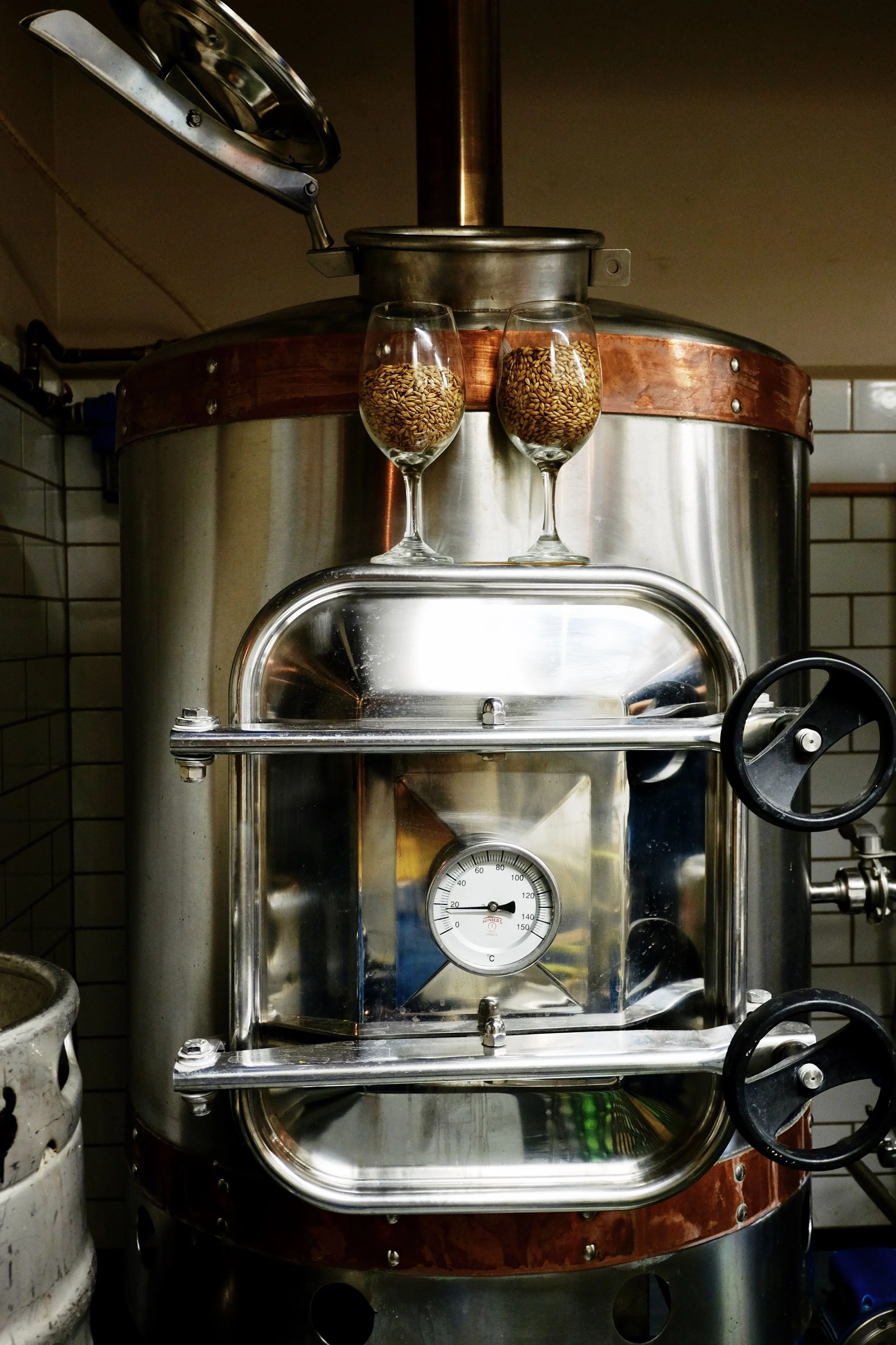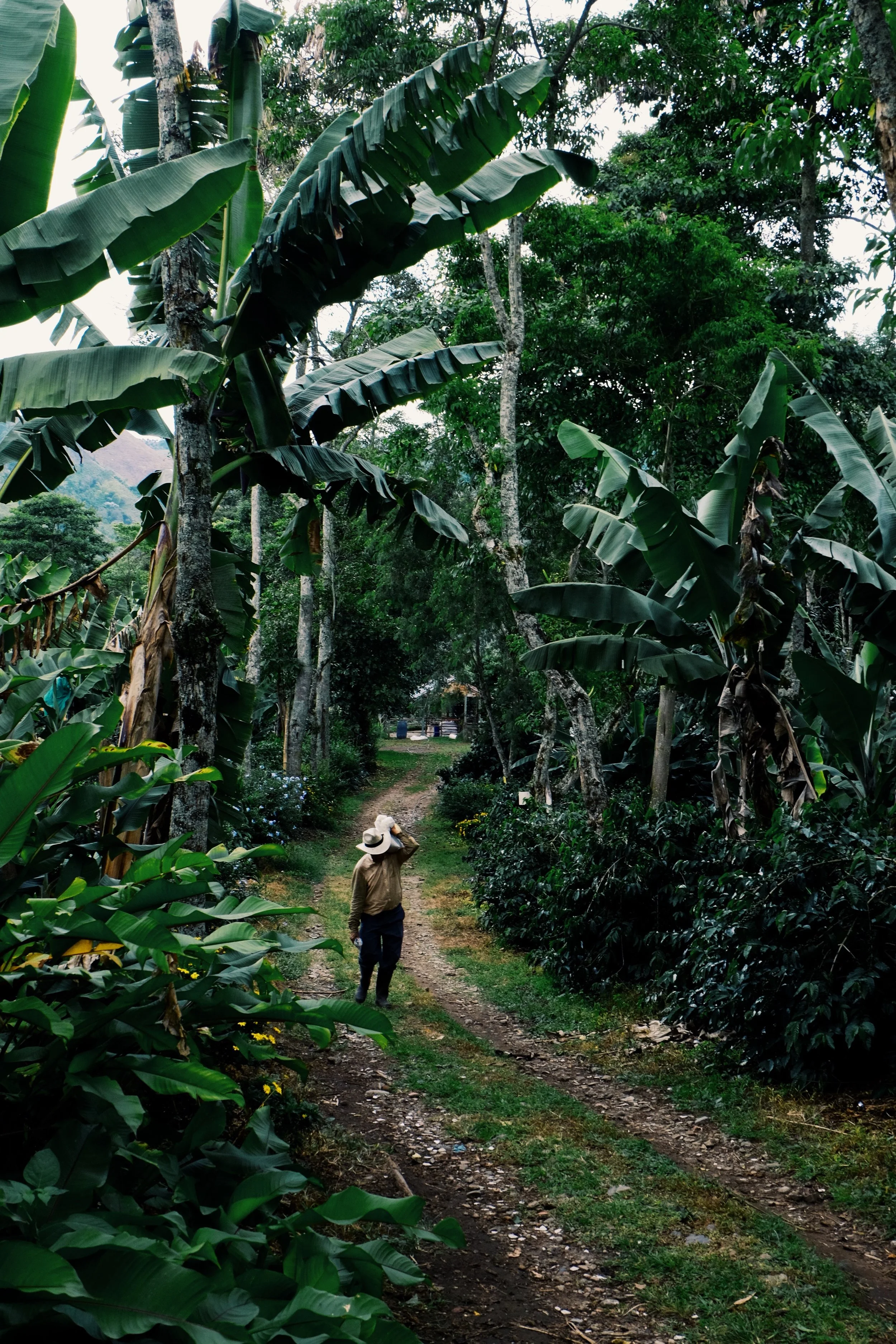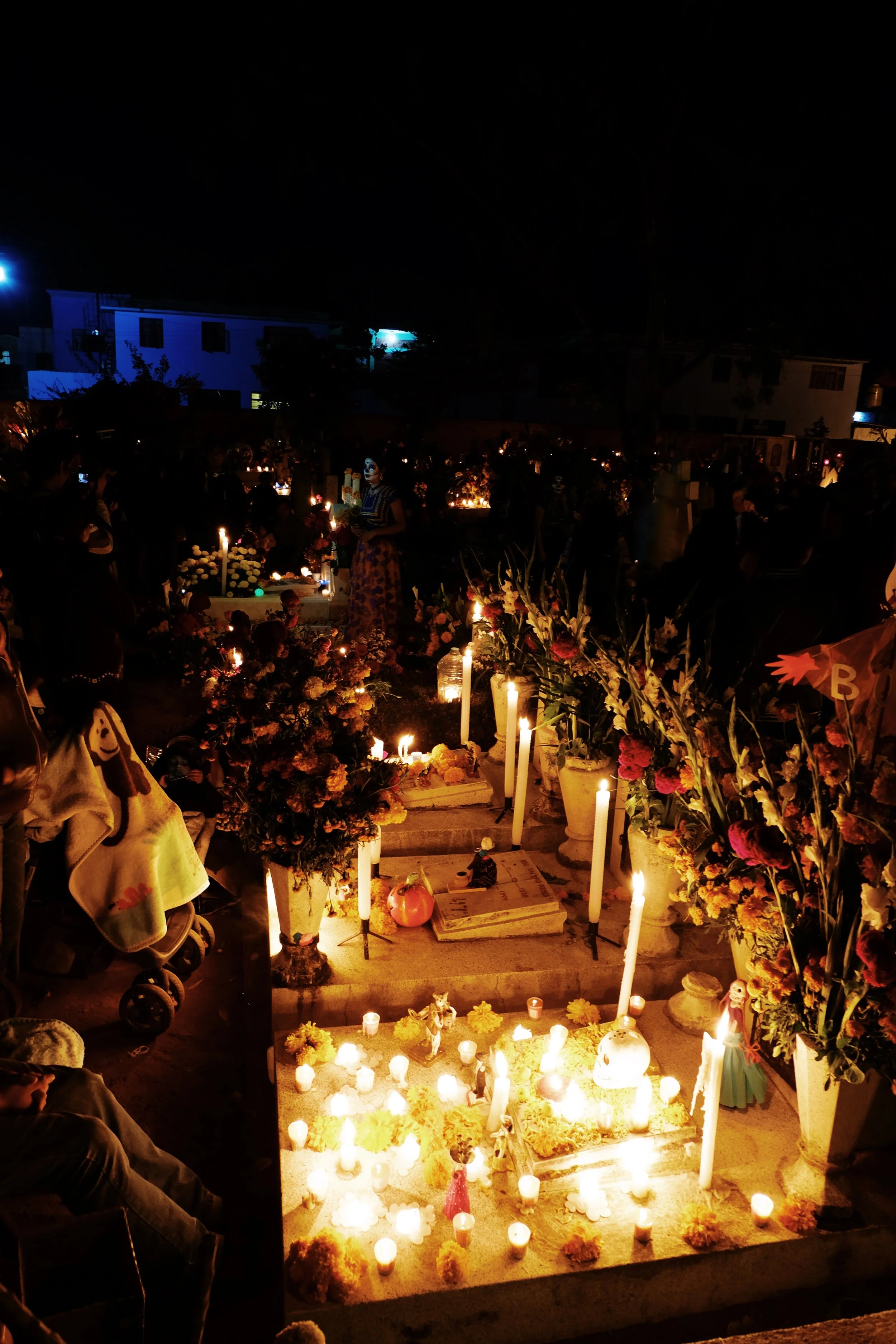From a Blest Past
Some time has passed since the last post, and the reason is our wandering through the wifiless Patagonian countryside. The time undulated, great to terrible, in steep pitches between the peaks and troughs: discovering hidden trekking and cold mountain water slides to hopelessly waiting for buses, unearthing wry memories of straining my neck into the street outside my apartment in Vicenza, searching for a bus in the rain while wearing running shoes for the likely possibility that I would need to run to work. On a bus to Peru returning to the fringe of technology, I can post again.
Our time in Chile began on Christmas Eve - another, far away from home. I woke up on the plane during the descent into Santiago which marked the penultimate event of our excursion from Salento to Valparaiso for the Christmas holidays. Out the window the morning haze appeared as smoke in a burning forest or mist above a lake in winter and the Andes mountains rose 20,000 feet at their highest separating the long, coastal country of Chile from Argentina to the east. The mountains appeared blue in the morning light. The plane landed in Santiago, a bowl rimmed by giants; we stepped off the plane, and the warm summer air contrasted sharply with the Christmas season I knew. Sonorous American (USA) Christmas songs filled the terminal. The border agents smiled and welcomed us to Chile: this definitely was not Colombia anymore.
To Valparaiso, the final leg, we rode a scenic bus through the rolling coastal hills west of Santiago. The terrain varied from the sparse, dry emptiness outside Santiago - similar to the foothills west of Denver - to the fertile fields with rivers running through the valleys irrigating the vegetables and fruits well into their growing for the season. After one hour, the Pacific Ocean filled the horizon and the hills of Valparaiso, falling down steeply into the ocean, came into view. The city is a UNESCO world heritage site, and, as we would learn later from a historically literate brewpub owner in town, the site of foremost progress during the development of Latin American. Now the buildings, covered in graffiti, stood in the twenty-first century as dusty relics of the past. They seemed forgotten in some way: their old elegance and beauty masked by neglect and street art. The baroque and classical buildings, juxtaposed by the orange, green, yellow, and blue make-up bringing them into modernity, slowly crumbled and broke. For now, like us, they stood confused and searching for their place: for them in time; for us in a bus station.
Valparaiso was our attempt at a Christmas holiday. We roasted Chicken Provençal, attempted to stream "Christmas Vacation" all day on the incredibly slow wifi, drank Champagne as soon as we woke up, fell asleep with red wine in our glasses, and FaceTimed with family throughout the day to fill the void - a void I'm accustomed to at this point in life, but nevertheless, like the heavy ruck on your back, repetition doesn't ease the strife. During all this Christmas cheer, we started chatting with a local brewpub owner in Valparaiso and scheduled a meeting at his brewery the following day. The prospect of good craft beer and what was sure to be a good story helped stymy some of the post-Yuletide depression.
I read about this brewery, Altamira, earlier in the month during a deep dive into Chile's craft beer scene around Santiago. Altamira stuck out because of the owner's personal story and his commitment to preserving Chilean beer tradition and history. Currently he operates a brewpub with a rotating menu of beer and food. The pub, housed in an old brick building, stood atop and right of large stairs leading up to a conglomerate of buildings. People scattered across the stairs reading, drinking, conversing. It reminded me of a bar in Vicenza beneath the Palladian Basilica in the center of town: cavernous inside with the large staircase outside leading down from the center plaza occupied by Italians drinking wine, smoking cigarettes, and enjoying the night and company of others. Within Altamira, glass cases hanging from the walls contained various beer memorabilia, sketches of brewing equipment and individuals influential in the development of the craft, and well preserved bottles and cans (recovered from the Atacama desert, the driest place in the world): a "Genealogia de la Cerveza." A low brick archway, keystone only a foot or two above my head, bisected the narrow dining room subtracting from the dimensions and adding to the coziness of the pub. The host led us to a reserved table and we watched as a three piece jazz band prepared for the night's performance. I remember fragments and riffs from "Kind of Blue" in the fog of their warm-up scales and improvisation. Soon after, Sergio, the owner and head brewer, introduced himself and led us to the front of the building to begin a history lesson on Chilean beer and his brewpub.
In 1810 Chile declared independence from Spain - the first to do so in Latin America. Given Valparaiso's exceptional port - which opened to all flags beginning in 1812 - it became Latin America's city of firsts: first telegraph, first football team, and most important to this story, first brewery. An Irishman named Andrew Blest arrived in 1813 and by 1825, quenching the beer of his Irish homeland, opened Chile's first brewery. In the twilight of 2017, we stood with Sergio in front of Altamira as he lectured this historical lesson with the gusto only a true historian gleans from the past. He started brewing 15 years ago when he was still a computer programmer. With a growing interest in brewing and a lifetime interest in history, an opportunity presented itself: the government of Valparaiso was providing grant money to stimulate the local economy. Sergio pitched the idea of a museum commemorating Chilean beer history and combined it with a brewpub concept. He opened his doors in 2011. Inside you can observe and learn about the history of beer in Valparaiso while sipping Sergio's recreations and artistic interpretations of those beers. It's similar to the Guinness Factory in Dublin, but better (and much smaller): you can grab a pint before the museum and carry it with you throughout. Plus, a little alcohol helps to visualize the historical tapestry woven together by Sergio's stories and exhibits.
Venturing back into the brewhouse, we witnessed Sergio's dedication to Blest's brewing traditions. The 350 liter (3 Bbl) brewhouse, custom made to the exact specifications of Andrew Blest's equipment from the 19th century, brewed Sergio's rotating menu of beers. Ironically, brewing with copper equipment is illegal in Chile (Chile is the largest exporter of copper in the world), so Sergio has adorned every barrel and fermenter with a copper ring as a tribute to Blest's all copper clad vessels. His deference for tradition and history has not stopped with the equipment. A friend of his recently dove into the Valparaiso Harbor to recover bottles of Blest's beer dating to the 1890's. Sergio then sent them to a chemist for a chemical analysis. He is currently waiting for the results but plans on replicating the exact recipe of Blest's beer from the 19th century and selling it in his brewpub this year.
We returned to our table with two flights of beer. The most unique was the Earl Grey Beer. Brewed with tea from Sri Lanka, the unfiltered beer begins with blueberry on the nose. The juicy, vicious liquid carried dark berries and Bergamot oil with a bitter bite at the end that was unlike any beer I had tasted: not so much a hop bitterness but rather that of a crisp ice tea. The second experimental beer was the Tropical Fruits Ale: white wine and fruit punch on the nose; grapes, mango, pear and sourdough bread on the tongue; and a yeasty, slightly spicy finish. Two traditional styles on the flight and one in a bottle stood out to me: Bavarian Weissen, Irish Dry Stout, and, in the bottle, a Belgian Dark Strong. The Bavarian Weissen perfectly reflected its origins: banana and clove on the nose and the beginning of the palate, followed by bubble gum and slight citrus later in the flavor, and finished with an herbal, floral bitterness. The creaminess and refreshing qualities truly complemented the summer evening. The Irish Dry Stout met expectations (being from a brewery harkening back to the Irish pioneer in Chilean beer, Andrew Blest): Roasted Coffee and chocolate in the aroma and flavor with a crisp, clean, dark finish. The Belgian also was delicious. Banana, vanilla, and dark rum on the nose; toffee, dark fruit, and raisins in the flavor with a slight licorice finish. After finishing our flights, we each ordered a pint and a snack: beef tartar.
As usual, good beer was accompanied by even better conversation. Sergio's historical knowledge, meticulousness, and perceptive awareness of human nature will certainly outlast the effect of his beer on me. While traveling we are searching for differences and peculiarities in the places and regions we visit. Why do these differences exist? I would argue history has a significant effect. During our conversation certain differences and similarities between my culture and his were evident, and his phrasing was a so memorable that I have to quote it verbatim. A phrase that marks a stark difference: "Tomorrow is not tomorrow." This is one I have heard from people in Mexico, Colombia, and now Chile. Time is very subjective here and as a result the pace of things varies significantly. Two similarities were in the next two phrases: "Every person is a complete universe" and "make sure everyone is dancing to your sheet of music." The first came up when talking of the complexity of working with employees, customers, distributors...people. And because of this reality, in order to manage a successful business the necessity of vigilantly employing the second phrase becomes readily apparent. For a moment I was even reminded of Cerveceria Gigante's owner Will when he said in reference to the Nautilus on his brand and more metaphysically to humans: "We start very small and defenseless. But in time, as we spiral out, we grow into our space and become bigger than we are." (reference Bogota Brews: Parte Uno). I may be reaching for this association. But I am the one who strings the infinite points of my life.






